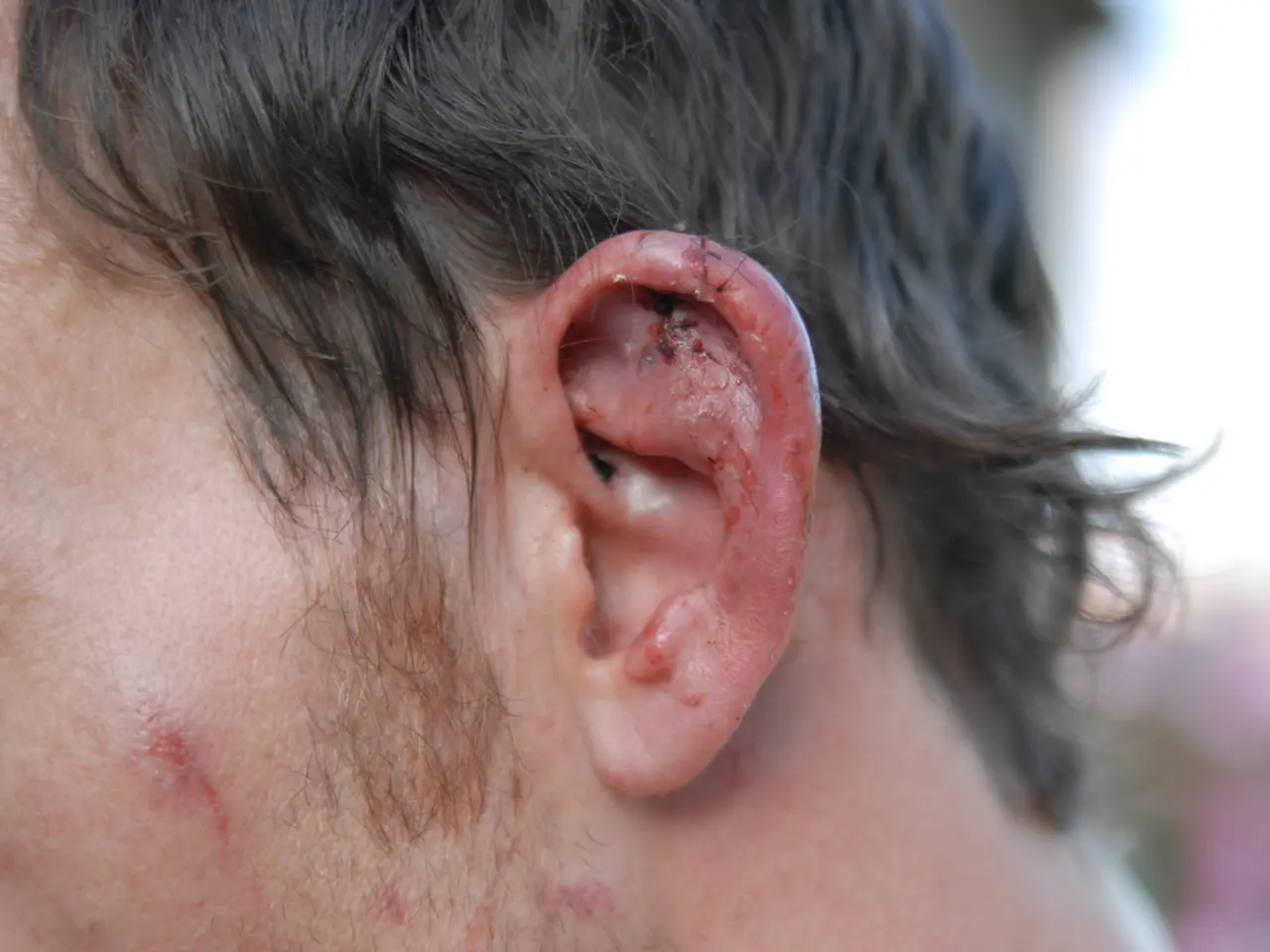Identifying Symptoms of Infant Brain Hemorrhage: A Guide for Parents
Babies, particularly those born prematurely or with certain medical conditions, can be at a higher risk of developing a brain bleed, also known as intracranial hemorrhage. This condition can have both short- and long-term effects on a baby's health.
Short-term Effects
Short-term effects of brain bleed in babies often include symptoms such as altered consciousness, seizures, irritability, poor feeding, vomiting, and in severe cases, coma. These acute symptoms arise as the brain tissue is compressed or damaged by the bleeding and increased pressure inside the skull [3][4].
Potential risks in the short term include brain swelling, increased intracranial pressure, anemia (if bleeding is extensive), infection (especially with related scalp injuries like cephalohematoma), and potentially life-threatening neurological decline [2][3]. Untreated or delayed treatment increases the risk of permanent brain damage.
Long-term Effects
Long-term effects differ significantly and depend on the injury's severity, location, and timeliness of treatment. Common long-term effects include cerebral palsy (CP), cognitive and developmental delays, seizure disorders, sensory processing difficulties, social and emotional challenges, and physical impairments [1][3].
Cerebral palsy (CP) is a movement disorder caused by damage to brain regions controlling muscle tone and coordination, particularly linked to injuries such as periventricular leukomalacia (PVL), which damages brain white matter near the ventricles [1][5].
Cognitive and developmental delays, challenges with learning, memory, attention, and behavior, manifesting as the child grows. Delayed speech and language development are also frequent, depending on affected brain areas [1][3].
Seizure disorders may develop from scarring or damage caused by bleeding in the brain [1][3]. Sensory processing difficulties can lead to problems interpreting sensory inputs, affecting interaction with the environment [1].
Social and emotional challenges such as mood swings, anxiety, depression, and difficulty with social skills may emerge [1][3]. Physical impairments like muscle weakness, balance, and coordination problems can sometimes lead to lifetime disability [3][5].
Potential Risk Factors
Certain medical conditions, such as hemophilia and low platelets (thrombocytopenia), can elevate the risk of a brain bleed. Low birth weight babies, weighing less than 3 pounds, 5 ounces, are more likely to experience a brain bleed due to underdeveloped organs. Babies delivered in the breech position are at a higher risk of developing a brain bleed due to potential trauma during the birthing process [1].
Assisted delivery with forceps or ventouse (Suction) can increase the risk of a brain bleed due to additional stress on the baby's head. Babies born before completing 32 weeks of pregnancy face the highest risk of developing a brain bleed due to underdeveloped blood vessels [2].
Symptoms to Monitor
In infants, unusual lethargy, poor feeding, seizures, bulging fontanelle, vomiting, respiratory irregularities, and abnormal reflexes should be closely monitored. In older babies/children, behavioral changes, motor impairments, speech delays, or seizures should be watched for [3].
Treatments
Treatments depend on the severity of the brain bleed. Short-term (acute) treatments may include close monitoring in a neonatal intensive care unit (NICU) or pediatric intensive care, surgical intervention to relieve pressure or remove hematomas if large or causing significant compression, supportive care such as blood transfusions for anemia and antibiotics if infection occurs, and seizure control medications if epilepsy develops [2][3].
Long-term management often involves early intervention therapies including physical, occupational, and speech therapy to improve developmental outcomes, ongoing neurological and developmental assessments, educational supports tailored to cognitive and behavioral needs, and specialist care for conditions like cerebral palsy or epilepsy [1][5].
In summary, short-term brain bleed effects in babies focus on acute neurological compromise and stabilization, while long-term effects involve a spectrum of physical, cognitive, and behavioral disabilities depending on brain regions affected and injury extent. Early diagnosis and intervention are critical to minimize lasting impacts [1][2][3][5].
- Science continues to explore the link between brain function, well-being, and sleep, particularly in the workplace-wellness context.
- Untreated cephalohematoma can lead to medical-conditions such as skin-infections or skin-conditions.
- Chronic-diseases like cancer, respiratory-conditions, digestive-health problems, eye-health issues, hearing impairments, and cardiovascular-health concerns often require specialized therapies-and-treatments.
- Parenting a child with mental-health challenges, such as anxiety or depression, can be demanding and often requires additional support and education.
- Fitness-and-exercise is essential for maintaining overall health-and-wellness, but it's even more critical for those managing weight-management issues.
- Research into sexual-health and autoimmune-disorders is ongoing, with the aim of improving diagnosis, treatment, and long-term patient outcomes.
- Mens-health initiatives focus on early detection and prevention of conditions like prostate cancer, heart disease, and testicular cancer.
- Skin-care is crucial for maintaining the health of the largest organ in the body, protecting it from harmful environmental factors, and preventing skin-conditions.
- Medicare benefits generally cover treatments for various medical-conditions mentioned here, improving access to care for numerous individuals.
- Therapies-and-treatments for neurological-disorders like Alzheimer's disease, Parkinson's disease, and other neurological disorders are under constant development.
- CBD has been studied for its potential benefits in managing chronic-pain, anxiety, and seizure disorders, although more research is needed.
- Womens-health encompasses various aspects, including fertility, pregnancy, childbirth, gynecological cancers, and breast health.
- Keeping tabs on your eye-health, hearing, and regular check-ups for dental health are important for overall well-being and quality of life.
- Incorporating fitness-and-exercise routines, vitamins, and a balanced diet can help manage some digestive-health concerns.
- Aging gracefully involves maintaining a healthy lifestyle, taking care of skin-care, and seeking timely treatment for age-related medical-conditions and diseases.




